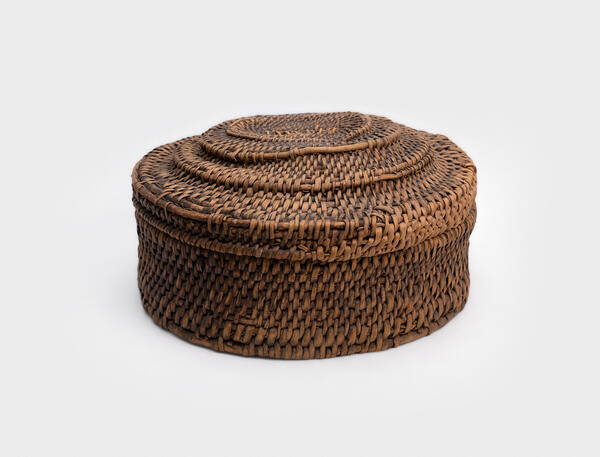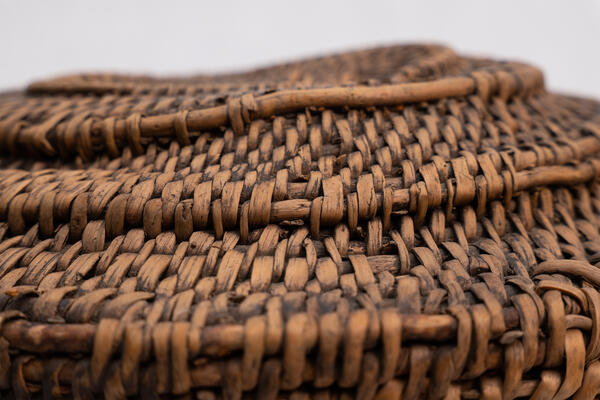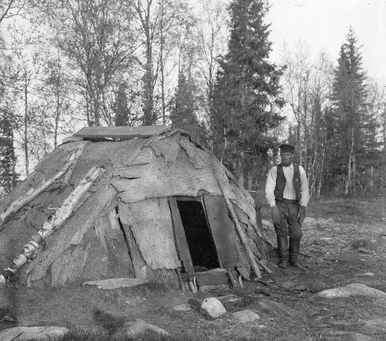The ancestors of the Sami people called the pine tree a symbol of long life, eternity and immortality. Even now this tree is widely known for its revitalizing properties. The aroma of pine has a favorable effect on respiratory organs and improves the microclimate. Due to the presence of phytoncides this tree has a positive effect on humans. Pine trees grow in environmentally safe taiga forests, where there are no industrial enterprises nearby. In a room with the finishing made of pine lumber, the air is perfectly clean, almost sterile.
In ancient times, the Sami people used to make wicker boxes from pine. The simplest wicker boxes made of pine root have survived to this day. It was very laborious work. The most difficult part of it was the process of procuring the raw material. Preparing the root required a lot of effort. If the soil in the forest was loose or the trees grew on sandy ground, the roots were easier to extract. When the root was completely on the surface, it could be cut and the next root could be extracted.
The collected root was peeled to be free of bark either in the forest or later, within three to four days after collection, using a special device for stripping the root of its bark. The root was stored in bundles in a dry room. Under such conditions, the storage period is not limited.
Pine roots are very strong and incredibly flexible. It is easy to knot a fresh root without risk of breaking it. As it dries, the root becomes firm and strong, and the glossy surface of the peeled root looks beautiful.
Making wicker items from pine root requires a lot
of time and labor. Only three types of weaving are used to produce objects of
various shapes and purposes: oval, round and rectangular. First, a “zaplyotka”
— the base of the item — is made. To do this, a thicker base root is woven
spirally with thin roots, taking the previous row. To make it, a round
non-layered root of the required diameter is soaked simultaneously with the
layered root. Then the craftsman proceeds with the usual weaving. The product
is dried after each weaving session.





